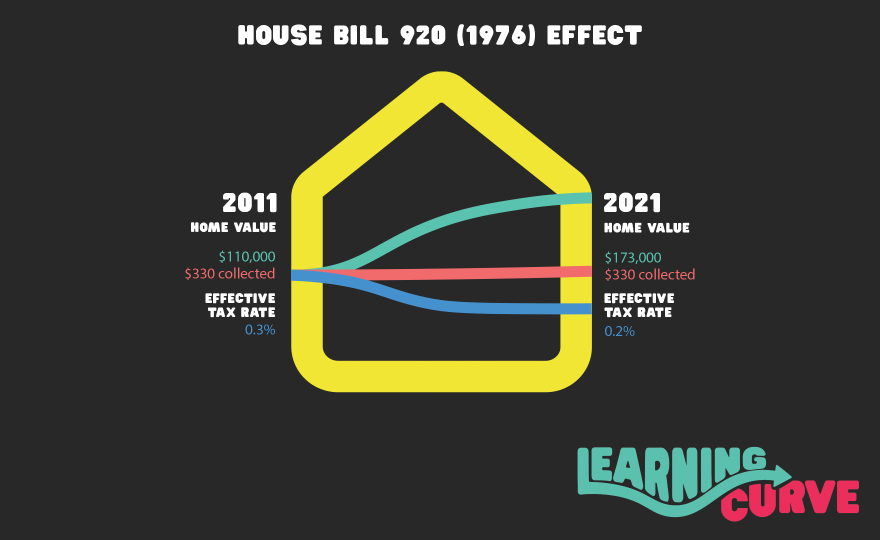It’s been a momentous six months for school funding in Ohio after decades of debate over how to most fairly fund the state’s more than 600 public school districts. A plan crafted by a group of legislators and school finance experts addressed inequities that plague the current funding formula. But the state House and Senate disagree on the approach – and cost is at the root of it.

Keith Freund
Last December, the sound of decades of work on school funding in Ohio echoed across the House floor with applause as the first bill to overhaul the state’s school funding formula passed overwhelmingly. Almost immediately it was declared dead on arrival in the Senate, thanks to a price tag of $1.8 billion dollars on top of the more than $10 billion the state already spends each year on K-12 education.
When the new two-year session began this year, lawmakers started over with House Bill 1. It’s a reintroduction of that bipartisan funding formula overhaul, which calculates state aid to schools with a formula of 60% property taxes and 40% household income. It would raise the state per-student aid, or the cost to educate a student, by $1,000 to $7,020. But because of the enormous cost, it would be phased in over six years.
Rep. Bride Rose Sweeney (D – Cleveland) was the Democratic joint sponsor of House Bill 1, which became part of the House version of the state budget and passed in April.
“By adopting this predictable, sustainable, transparent framework that is fair for every Ohio student, no matter where they are from, House Bill 1 would fully and finally address Ohio’s hopelessly broken system for funding Ohio’s schools," Sweeney said.
The Fair School Funding Plan
Democrats mostly supported what is now called the Fair School Funding Plan along with school groups and education advocates. Nearly all of the $1.8 billion cost to phase it in was left to future legislators to allocate over the next two budget cycles. The House budget used teacher salary data from 2018 and outdated property tax values in its cost estimates. House Republicans had also pulled into their formula $1.1 billion that was set aside in Gov. Mike DeWine’s initial budget specifically for wellness initiatives for all low-income students, such as tutoring and mental health counseling.
House Bill 1 would fully and finally address Ohio’s hopelessly broken system for funding Ohio’s schools.
Rep. Bride Rose Sweeney (D-Cleveland)
Then, Senate Republicans ripped apart the House plan. Senate President Matt Huffman (R – Lima) said their reworked proposal will allow for the cost of education to go up every year.
“My concern with the House plan is that in four or five years, we are right back where we were for the last 20 years, which is a large increase in spending and we’re faced with either cutting funding to schools, cutting funding to some other spending or raising taxes,” Huffman said.
Senate leaders replaced the House formula with a two-year budget cycle formula. It’s based on 80% of an average teacher’s salary and benefits, a student/teacher ratio of 20-to-1 and other money added in to total $6,110 in per student aid, and it puts over $428 million more into schools than the House budget does. Senate Finance Committee chair Matt Dolan (R – Chagrin Falls) offered this as a comparison of the two plans:
“The difference is, our plan is sustainable and can be paid for, not only in these two years but in the out years,” Dolan said.
But again, there are questions. Senators used 2019 salary data after noting that the House used 2018 data and used $450 million of the over $1 billion in wellness dollars that was initially budgeted by DeWine.
Concerns over the senate plan

Keith Freund
Groups that supported the House plan are critical of the Senate’s. Ohio Education Association President Scott DiMauro said the Senate formula ignores why Ohio’s way of funding schools was ruled unconstitutional in 1997 – first, the reliance on property taxes.
"The House plan addresses that. The Senate plan does not," DiMauro said. "The second thing that the Supreme Court said is that there is not a commitment to adequately fund our schools that's tied to the actual cost of educating a child. The House plan addresses that. The Senate plan does not.”
The person who led the lawsuit against the state that resulted in the 1997 Ohio Supreme Court ruling also supports the House plan and opposes the one from the Senate. Bill Phillis from the Ohio Coalition for Equity and Adequacy of School Funding says as always, cost appears to be the main sticking point, and it’s time to get beyond that.
“Legislators will use any excuse – they’ll use COVID as an excuse, they’ll use international politics as an excuse – they’ll use any excuse for not biting the bullet and doing what the constitution of the state of Ohio says, and that’s to provide a thorough and efficient system of common schools throughout the state," Phillis said.
Lawmakers will have to work out the differences between the two plans before the budget deadline of June 30.
"House" - Google News
June 08, 2021 at 11:54PM
https://ift.tt/3wad6i4
Ohio House and Senate at Odds Over the Future of K-12 Public Education Funding - WKSU News
"House" - Google News
https://ift.tt/2q5ay8k
Shoes Man Tutorial
Pos News Update
Meme Update
Korean Entertainment News
Japan News Update
Bagikan Berita Ini














0 Response to "Ohio House and Senate at Odds Over the Future of K-12 Public Education Funding - WKSU News"
Post a Comment